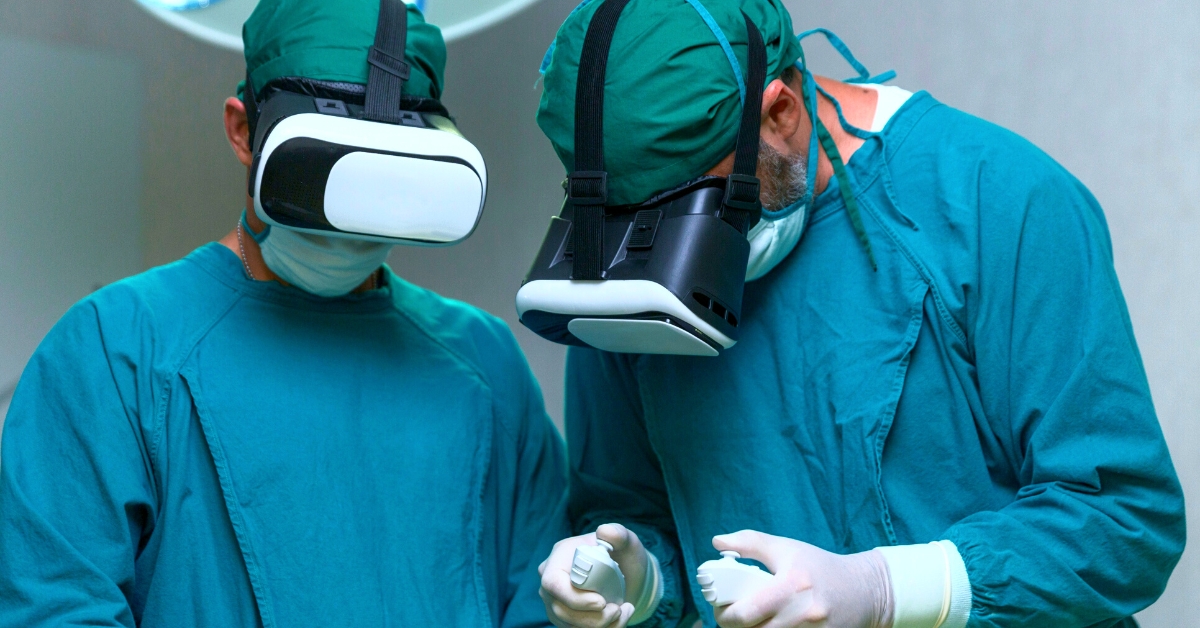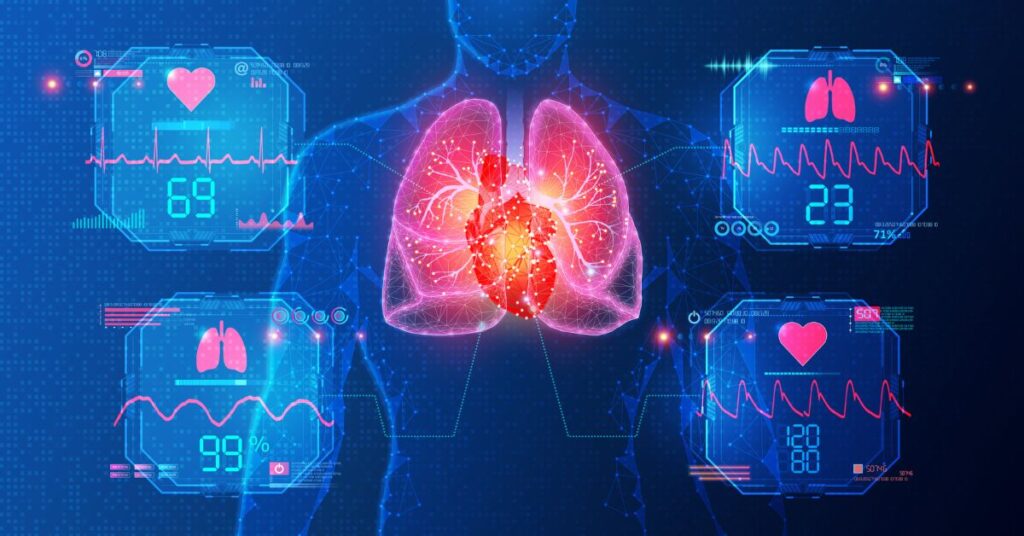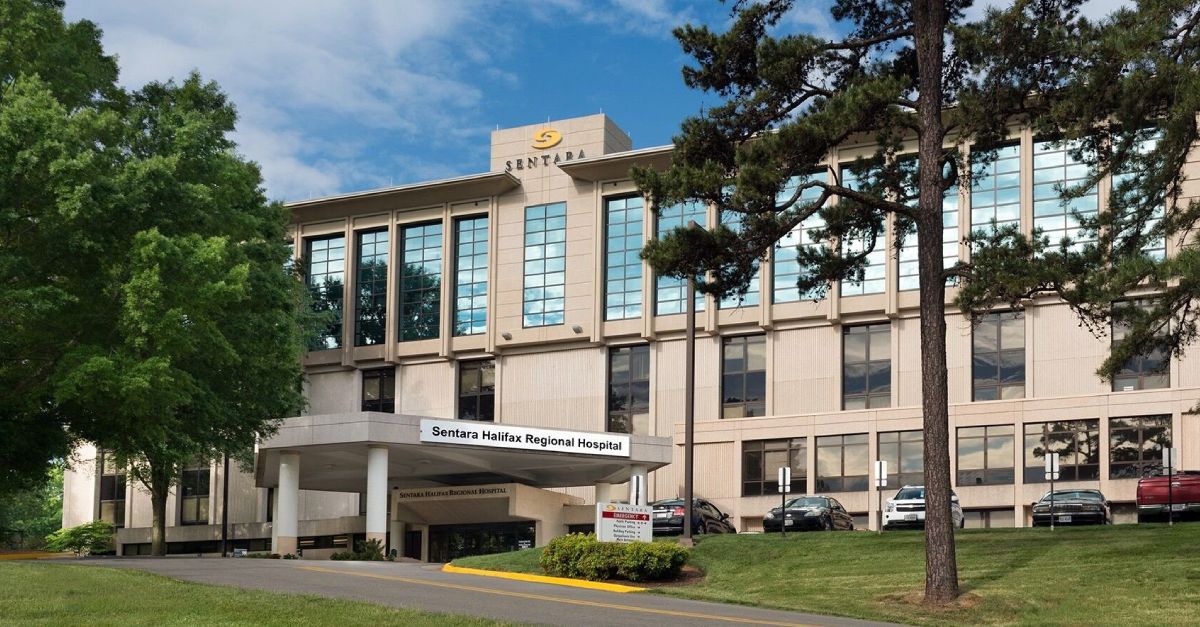
Are Artificial Intelligence and Augmented Reality Trendy Threats to the Cath Lab, or Our Friends?
The rise of artificial intelligence (AI) and augmented reality (AR) has made headlines recently, with open-use AI tools like ChatGPT and its tools for creating instant art, music, and writing and AR tools hitting consumers including the Meta Spark platform and Meta Quest AR headsets from the parent company of Facebook. But how do they play in the cath lab? And should we welcome them?
The growing use of AI tools in all sorts of business applications has left many “regular humans” worried that their jobs could be at stake. Back in 2017, Rasu Shrestha, chief innovation officer at the University of Pittsburgh Medical Center and chief of the division of radiology informatics told CNBC that, “health and health care is too human a notion for AI alone to cure it.”
In fact, in just the past few years we’ve seen many ways that AI tools can be useful in medical fields, including cardiology, in ways that may save jobs and decrease physician burnout.
Helping AI Help Patients
As a recent Mayo Clinic article notes, AI has not only been helpful in hospital settings, but the medical community has also been helping to create better AI.
“Uses for AI include detecting heart disease, treating strokes faster and enhancing diagnostic radiology capabilities,” notes the article. “For example, a Mayo Clinic study applied AI techniques to a new screening tool for people with a certain type of heart problem that has no obvious symptoms. The condition is called left ventricular dysfunction. The AI-assisted screening tool found people at risk of this condition 93% of the time. To put that in perspective, a mammogram is accurate 85% of the time.”
Brad Serwer, MD, an interventional cardiologist and Chief Medical Officer at VitalSolution-Cardiology, notes that “There are many remote monitoring systems that can now monitor a patient’s heart rate, blood pressure, thoracic impedance, oxygen saturation, and weight. There are some excellent AI-based monitoring services that can continuously collect data, analyze the results and then notify medical staff when needed.”
One such monitoring device is even available at the consumer level, like the Apple Watch which uses Mayo-developed AI to detect a weak heart pump (low ventricular ejection fraction). Or AI can be used on patients who may be having a stroke. When a stroke is suspected, for example, AI software designed to analyze CT data can quickly diagnose that a stroke has occurred, thus cutting down the time to diagnosis and limiting brain damage.
AI and Number Crunching
AI tools use artificial intelligence algorithms to perform specific tasks and solve problems. Which is great when you’re rich with data, and under a time crunch to analyze it – just like in the cath lab.
“Cardiology has been using AI technology for many years, especially in the interpretation of diagnostic studies,” notes Dr. Serwer. “One of the first uses was in analyzing EKGs. AI technologies have been proven beneficial in interpreting radiographic studies such as CT scans, MRI, and echocardiograms.”
While cardiology already uses sophisticated computers and technical equipment, AI tools with rapid-fire processing and computer learning can help make complex conclusions from many data points. This can save valuable time when a patient is already vulnerable.
In a recent example published by Yahoo! Finance, it’s highlighted that “radiologists can spend several hours dissecting layers and angles of images in order to help target the exact location of cancer. AI could cut the search down to 15-20 minutes.”

AI And Getting More Patient Time
In addition to cutting down on time for sophisticated diagnostic analysis, AI tools can free up cardiologist time to see patients face-to-face. More clinical time can improve the decision-making process and direct care. When faced with a high volume of patients, utilizing AI can mean improved intake processing, reallocating resources in real-time, or even better integration of electronic healthcare records (EHRs) which can often limit physicians from seeing “the whole picture.”
Technologies powered by AI, machine learning and robotic process automation have the potential to improve outcomes and patient experience.
And as noted in a recent McKinsey Market Insights study on “AI in Care and Delivery,” the focus for patient care improvement with AI should be on four main areas:
• Prevention: Identify patients at risk of disease.
• Detection: Detect changes in patients’ medical conditions.
• Diagnosis: Enable more accurate and faster diagnoses.
• Treatment: Customize treatment plans for individual patients.
“While AI’s success hinges on the expertise of the clinicians and health professionals who use it, it can significantly ease pressure on resources and increase efficiencies,” notes the McKinsey study. “Technologies powered by AI, machine learning and robotic process automation have the potential to improve outcomes and patient experience and to control costs through timely and precise interventions, greater productivity and a reduction in unnecessary utilization.”
How Does AR Play in the Cath Lab?
While you might think of AR as something of a toy (and it’s often used in casual applications like Meta’s headset), it has also leveled up in medical settings, including the cath lab.
“By using AR, interventionalists could combine visual fluoroscopy information projected and registered on the patient body with data derived from preprocedural imaging and live fusion of different imaging modalities such as fluoroscopy with echocardiography,” notes a 2021 study published in the Journal of the American College of Cardiology: Cardiovascular Imaging.
The study also notes that AR and Virtual Reality (VR) tools can also help in other ways, including these:
| User | Aim | Description |
|---|---|---|
| Physician/health care provider | Education | Medical students or beginners can learn new or complex cardiovascular subjects |
| Planning | Interventionalists can plan complex cardiovascular procedures | |
| Performing | Interventionalists can be assisted in complex cardiovascular procedures | |
| Patient | Education | Patients can be educated in specific complex cardiovascular issues |
| Distraction | Patients can be distracted during complex cardiovascular interventions | |
| Treatment | Rehabilitation of patients can be enhanced after specific complex cardiovascular interventions |
In January 2023, the FDA cleared VR software for surgical planning in a “mixed reality space” where many medical professionals can consult together in a virtual space to analyze information from CT and MRI scans. But this wasn’t the first VR and AR use in cardiology. In 2021, doctors at CentraCare in Minnesota completed the first structural heart procedure in the world guided by a new 4-D hologram technology. And even in 2019, VR was being used to analyze structural heart imaging exams at the University of Chicago, and in Ann Arbor AR was used to acclimatize children and other nervous patients for an MRI.
How Safe Is This New Technology, Anyway?
Adoption of tools like AR, VR and AI can come with not only a learning curve by physicians who would be using the tools but also by the public who can have a sense of skepticism when faced with strange new tech. A 2023 survey by GE HealthCare found that “at least 55% of medical professionals say AI is not ready for medical use, the international GE survey revealed. Of those asked, 42% globally — and only 26% in the US — think AI can be trusted. The survey included 7,500 clinicians, such as doctors, physician assistants, and public health medics, as well as patients and patient advocates in eight countries.”
And that’s the thing about something new, especially in complex fields like medicine. We’re often more scared than we should be – while an ounce of skepticism is still OK if it doesn’t get in the way of progress.
“Blind trust in a new technology is unsettling and concerning until the technology has been proven safe with time and outcomes,” notes Dr. Serwer.
Machines Are Only As Good As We Make Them
There are continuing studies that look at AI, VR, and AR’s potential in cardiology and other medical settings. And our regulatory processes also analyze those findings before approving any new methods. The good news is so far, many studies have been positive.
For example, at Cedars-Sinai, a new study looked at whether AI was more accurate than an ultrasound technician in an initial assessment of nearly 3,500 transthoracic echocardiogram studies.
Among the results:
- Cardiologists made corrections to AI assessments only 16.8% of the time.
- Cardiologists made corrections to sonographers’ assessments 27.2% of the time.
- Physicians were unable to tell the AI assessments from the sonographers’ assessments.
- AI saved cardiologists and sonographers time.
These types of results, now under review by the FDA for regulatory approval to use this AI-assisted method for patient assessments, are just one example of careful and measured progress to improve not only patient outcomes but also physician job satisfaction by freeing up time for different tasks.
“As with the use of any new technology, there are always limitations. Artificial intelligence relies on programming and algorithms,” notes Dr. Serwer. “True AI has the ability to learn and to improve upon these algorithms with more use. The ability to track multiple patient metrics and catch cardiovascular disease at an earlier stage than previously possible means less cardiac morbidity and mortality.”
Hopefully in the years to come, we’ll see more advancements utilizing AI, AR, and VR in the cath lab, and across many more medical settings.
 company
company 
 (866) 755-7519
(866) 755-7519











